Design Students Embrace Imperfection with Tables Made from Salvaged Old-Growth Lumber
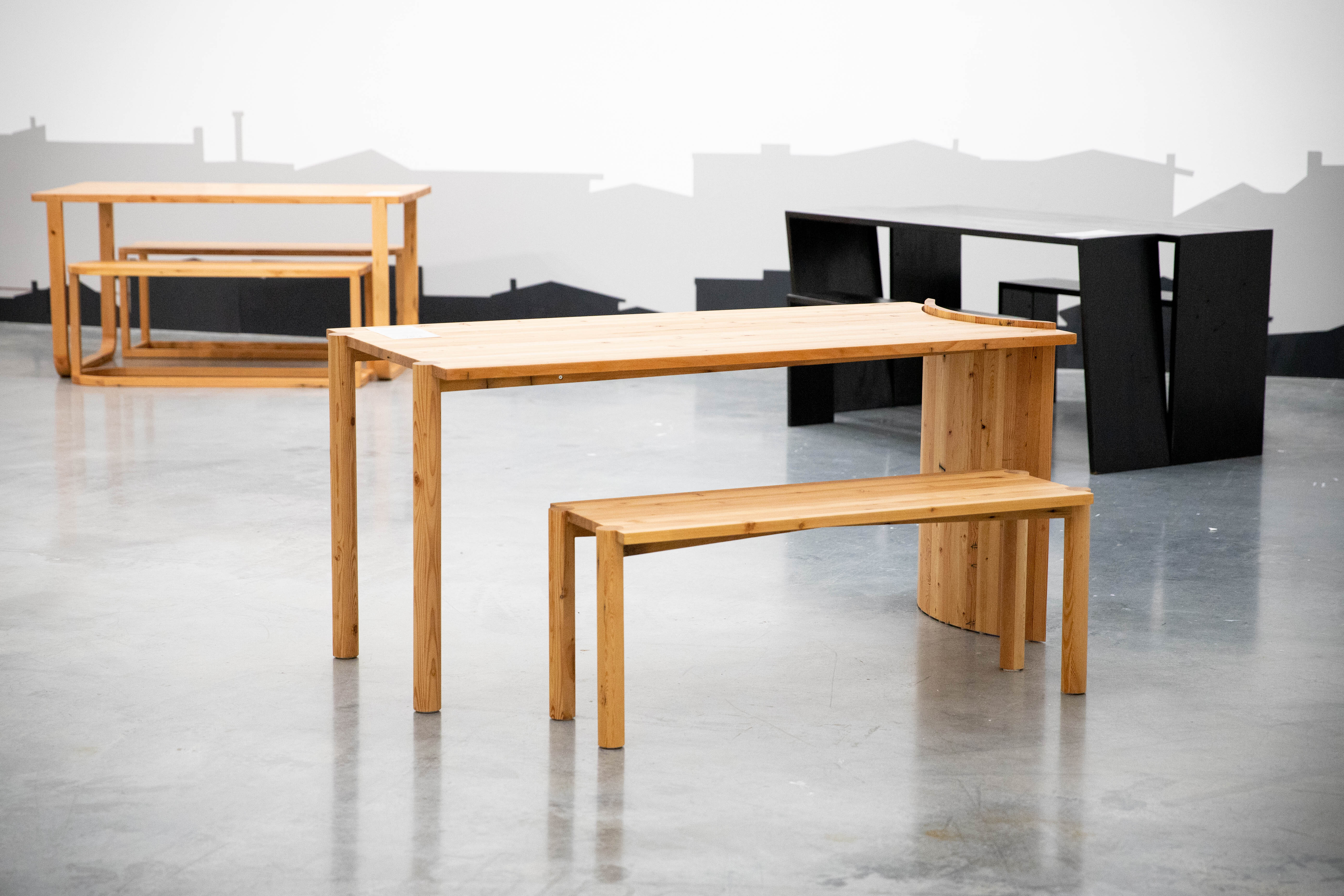
Three of the tables in the High/Low design exhibition at the Michael O'Brian Exhibition Commons at Emily Carr University. (Photo by Perrin Grauer / Emily Carr University)
Posted on | Updated
In High/Low, an exhibition currently showing at Emily Carr, students in Christian Blyt’s industrial design course spotlight solutions for turning reclaimed Douglas fir into new home furnishings.
A series of tables and benches created by ECU design students from salvaged old-growth wood are currently on display at the Michael O’Brian Exhibition Commons (MOEC) at Emily Carr University.
All the furniture in the show, titled High/Low, was designed and built by students in the INDD 310 Spring 2021: Wood Product Design class, taught by designer and ECU faculty member Christian Blyt. The title of the exhibition comes from the class’s design brief: to create a high and a low table, where the low table can also serve as a bench. The wood — all Douglas fir 2x4s reclaimed from Vancouver heritage houses — was saved from the scrap heap by local salvage and carpentry operation, Unbuilders.
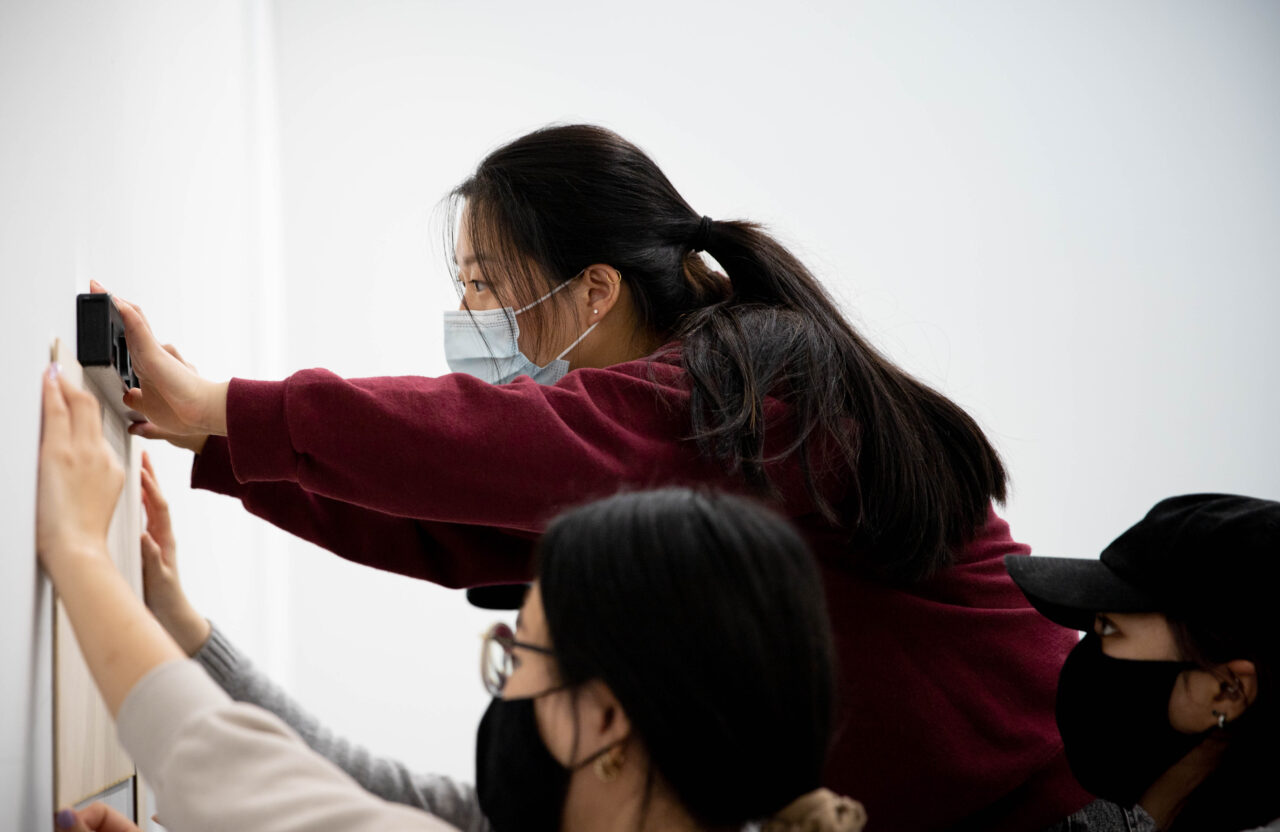
Design students Angela Cheng (top), Gigi Lui (bottom) and Vivian Tran (right) work on installing the High/Low exhibition in the Michael O'Brian Exhibition Commons at Emily Carr University. (Perrin Grauer / Emily Carr University)
Each piece of the salvaged lumber came with its own unique fingerprint of nail holes, discolouration, and even mould. This mean students were challenged not only to design a piece of furniture, but to consider their materials as individual objects in the process.
“The story is a big part of it — the story of where the wood came from,” Christian tells me. Too often, he continues, wood from demolished or renovated houses is chipped for fill. Unbuilders’ strategy for “unbuilding” structures gives lumber a second life, and gives designers a chance to work with a material that shows its age.
“A big part of the project was for these students to really embrace the principles of wabi-sabi — thinking about how we can celebrate the imperfections in the material. Because definitely each piece is a unique thing.”
That uniqueness got design student and High/Low exhibition leader Angela Cheng asking some big questions.
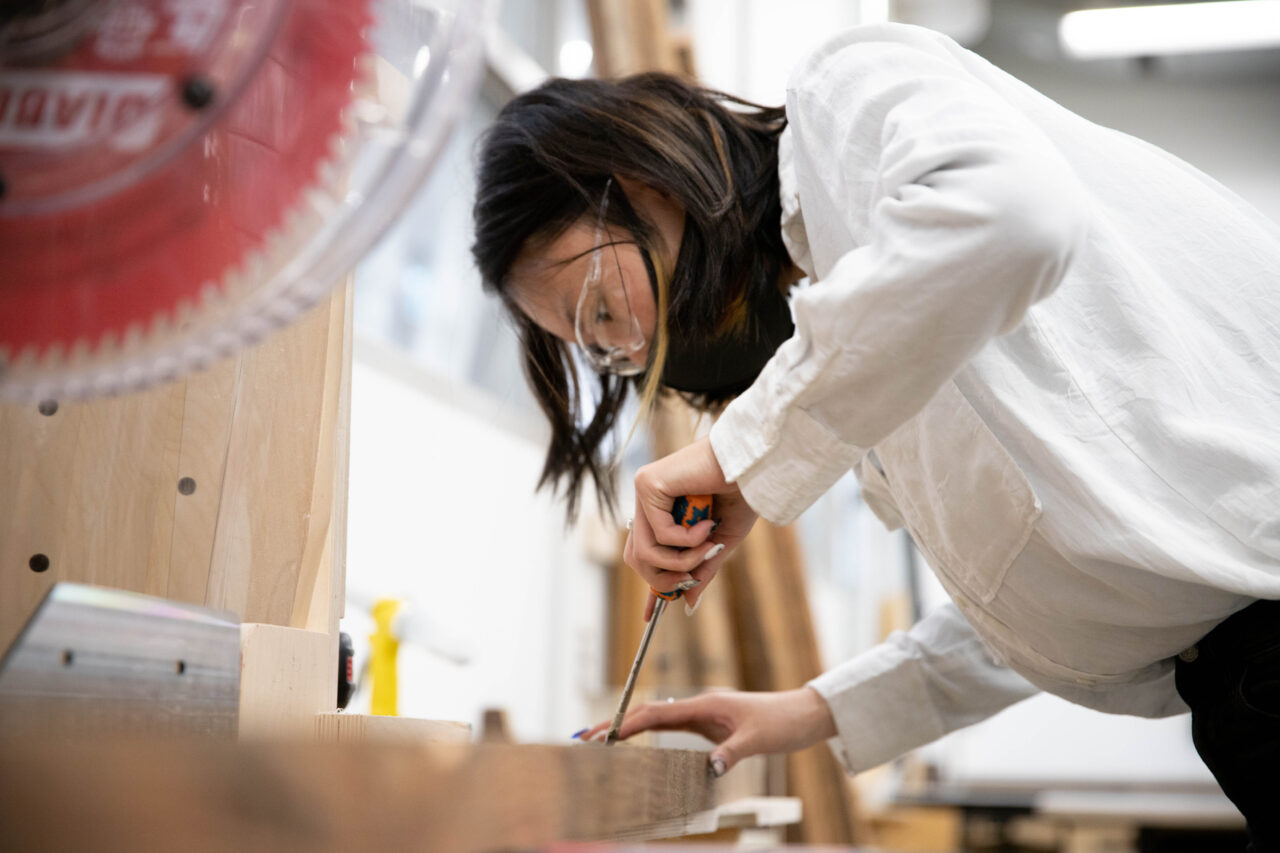
Design student Clementine Chang prepares a reclaimed old-growth 2x4 for the chop saw in the woodshop at Emily Carr. (Perrin Grauer / Emily Carr University)
“How do you take a reclaimed material and make it into something where people will really appreciate and understand the story behind the wood, where it came from?” Angela tells me. Angela, alongside classmates Gigi Lui and Peter An, created the Mu table set.
Reclaimed wood is “a really under-appreciated material,” she continues, which many people view as undesirable due to its visible imperfections. But through the lens of storytelling, all the nail holes and discolouration can be seen as a form of “mark-making,” that invites a deeper relationship between a person and their possessions.
Design student Ara Rattan, who created the Return table with classmates Sahali Tsang and Vivian Tran, had never worked with wood previously. For Ara, being introduced to reclaimed lumber was “like discovering an alternate reality.”
“Working with this material was really informative for my design practice,” she continues. “I would definitely want to work with it again in the future.”
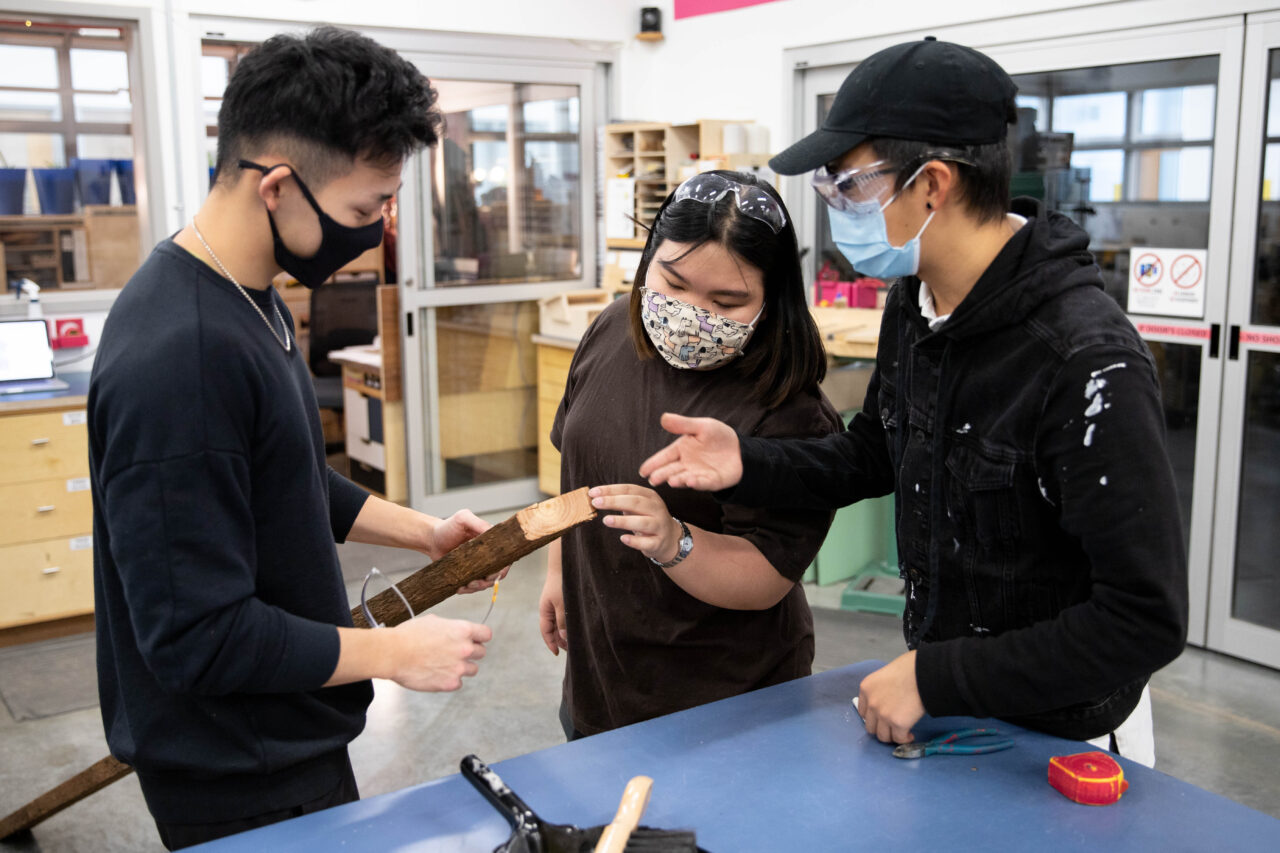
Design students Aaron Lin (left), Nhu Nguyen (centre) and Peter An (right) inspect a test cut ahead in the woodshop at Emily Carr. (Perrin Grauer / Emily Carr University)
Fellow student Nhu Nguyen, who created the Litho table with classmates Shelby Sixsmith and Clementine Chang, says working with reclaimed wood provoked a value shift in her practice.
"Normally we take lumber for granted — whenever we buy something or use something from the woodshop it’s very pristine, very clean,” she tells me. In objects where this pristine lumber is used, the focus tends to be “on the design rather than on the material.” Through working with reclaimed lumber, Nhu says she discovered a way of working that focuses “on the materials as part of the design,” which puts the designer and material into a kind of quiet collaboration.
Design student Vivian Tran, who worked with Ara on the Return table, says her own experience was a bit of a rollercoaster.
“At first I felt like, ‘Oh, these nail holes, they’re so ugly,’” she says. “But as you work with the material, you grow to appreciate it. And people have said, ‘I actually really love the nail holes because they show where the wood came from.’ So, there’s more of a connection to its actual roots, and in the end, I wound up actually really loving it.”
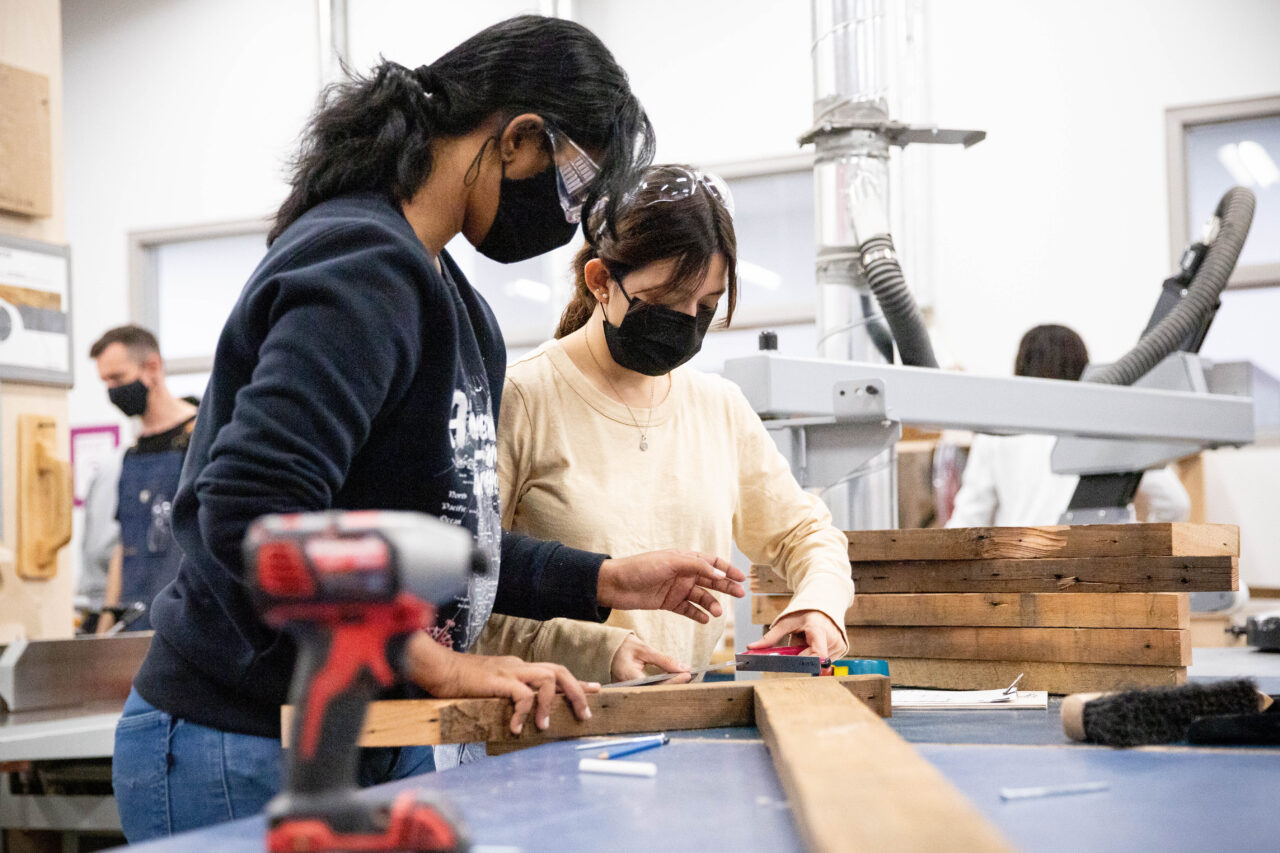
Design students Nidhi Hira (left) and Paula Torres (right) work on preparing reclaimed lumber for the High/Low exhibition at Emily Carr. (Perrin Grauer / Emily Carr University)
Also included in the exhibition is the Stiløk table by
design students Jiahui (Michelle) Li, Paula Torres and Nidhi Hira, and
the Fir table by Aaron Lin and Bear Fraser.
You can the High/Low exhibition in-person now, at the MOEC on Level 2 of the Emily Carr University campus building. A public opening reception for the show will be held onsite at the MOEC at 5pm on Thursday, Oct. 28.